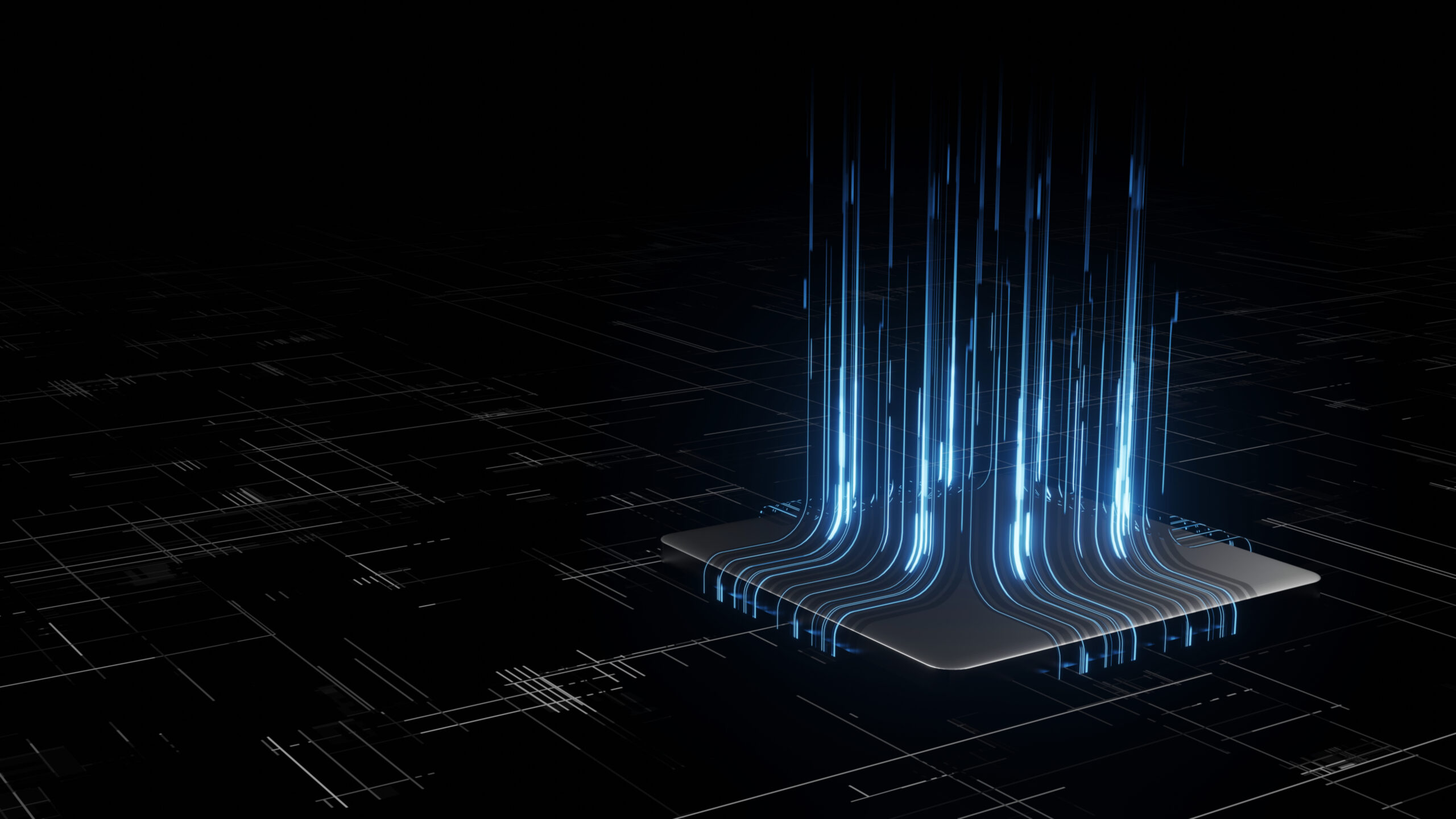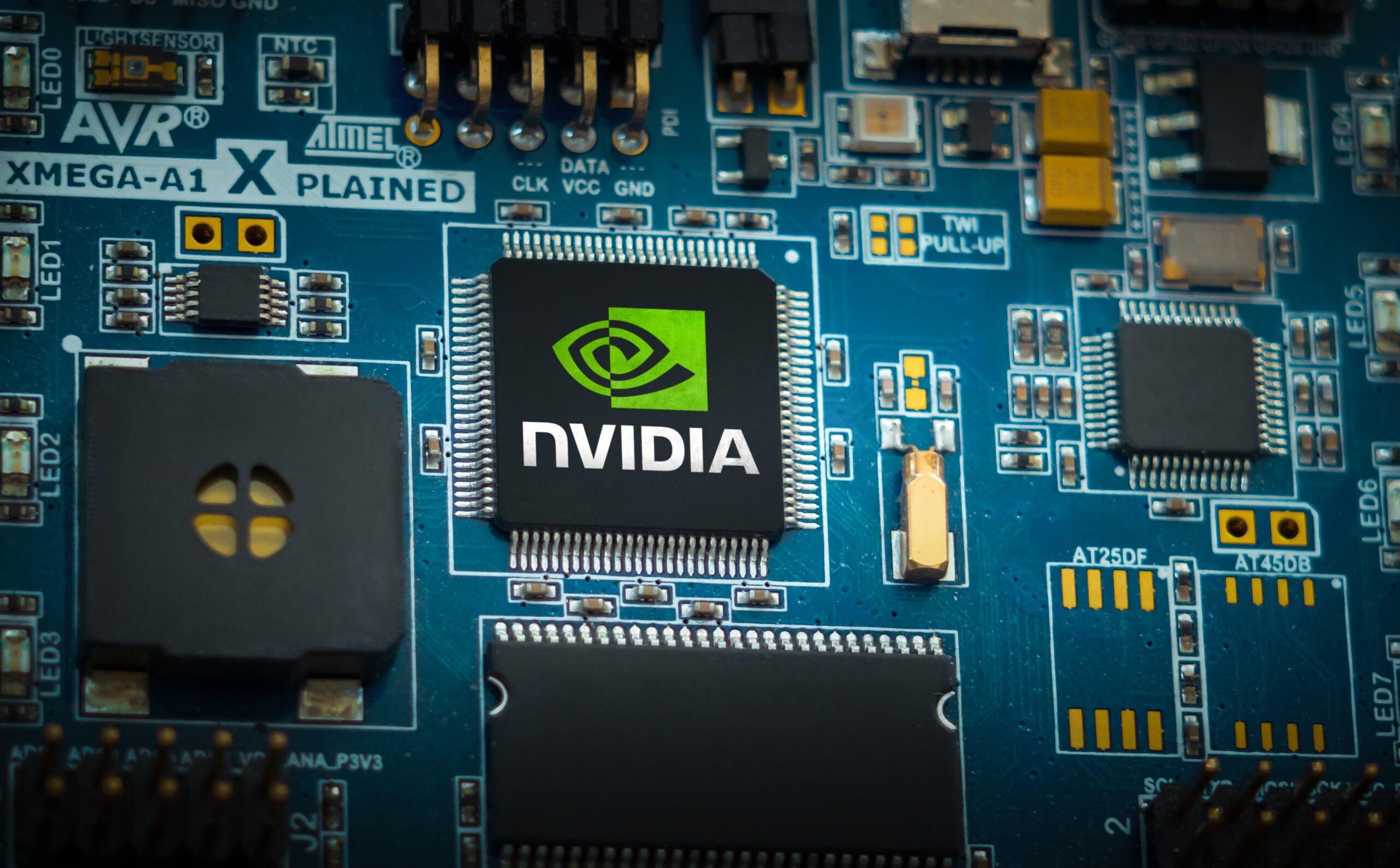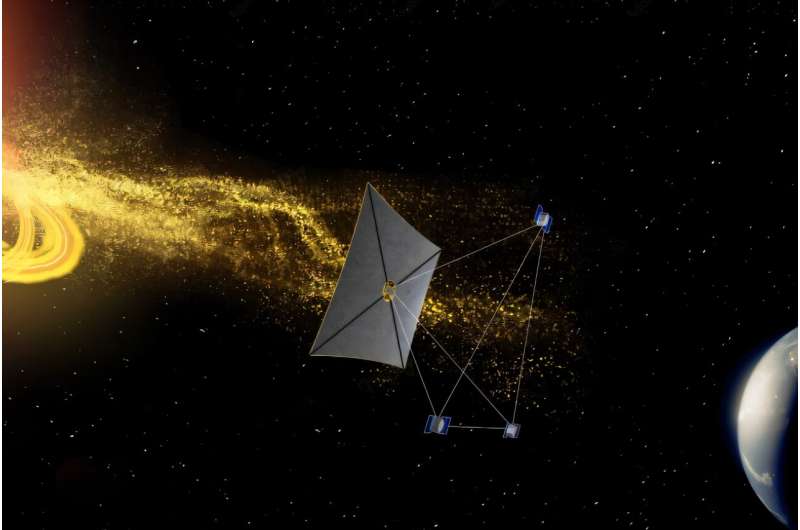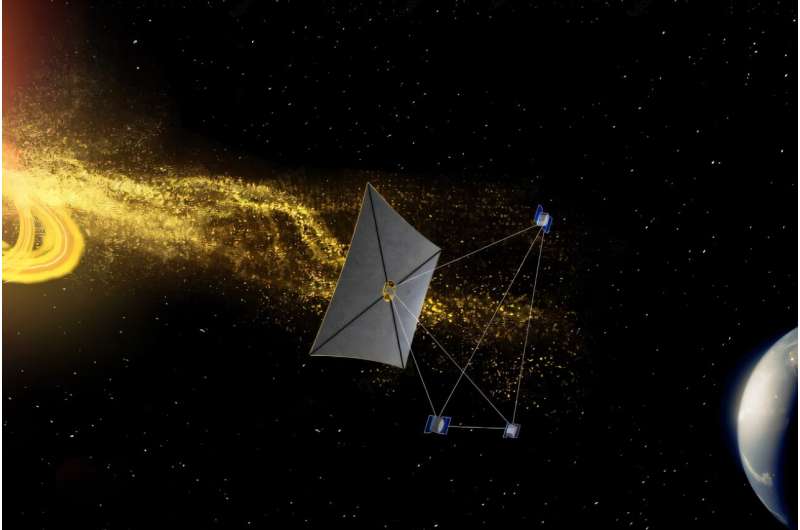More processor coverage on Network World:
Intel news and insights | AMD news and insights
With its legacy of innovation in GPU technology, Nvidia has become a dominant force in the AI market. Nvidia’s partners read like a technology who’s who list – e.g., AWS, Google Cloud, Microsoft Azure, Dell, HPE – and also crosses into vertical industries such as healthcare, finance, automotive, and manufacturing.
From its gaming roots, Nvidia’s GPUs have evolved to power breakthroughs in scientific simulations, data analysis, and machine learning.
Follow this page for the latest news, analysis, and features on Nvidia’s advancements and their impact on enterprise transformation.
Nvidia news and analysis
Inside Nvidia’s ‘grid-to-chip’ vision: How Vera Rubin and Spectrum-XGS advanceAI giga-factories
October 13, 2025: Nvidia will be front-and-center at this week’s Global Summit for members of the Open Compute Project. The company is making announcements on several fronts, including the debut of Vera Rubin MGX, its next-gen architecture fusing CPUs and GPUs, and Spectrum-XGS Ethernet, a networking fabric designed for “giga-scale” AI factories.
Nvidia and Fujitsu team for vertical industry AI projects
October 6, 2025: Nvidia has partnered with Fujitsu to collaborate on vertical industry-specific artificial intelligence projects. The partnership will focus on co-developing and delivering an AI agent platform tailored for industry-specific agents in sectors such as healthcare, manufacturing, and robotics.
Nvidia and OpenAI open $100B, 10 GW data center alliance
September 23, 2025: OpenAI and Nvidia will create a strategic partnership to deploy at least 10 gigawatts of Nvidia systems for OpenAI’s next-generation AI infrastructure.The first phase is expected to come online in the second half of 2026 using Nvidia’s Vera Rubin CPU/GPU combination platform to train and run new models.
Who wins/loses with the Intel-Nvidia union?
September 22, 2025: Nvidia is dipping into its $56 billion bank account to acquire a 5% stake in Intel for $5 billion, making it the second largest shareholder of Intel stock after the federal government’s recent investment. The deal provides Nvidia greater access to the x86 ecosystem, important for the enterprise data center market, and provides Intel with access to GPUs that have demand and can move their CPU products as well.
Nvidia reportedly acquires Enfabrica CEO and chip technology license
September 19, 2025: Nvidia has hired away the CEO and other staff of chip interconnect maker Enfabrica, and licensed its core technologies in a deal worth over $900 million, Behind the move is demand for computing capacity to power generative AI for the likes of OpenAI, Anthropic, Mistral, AWS, Microsoft, and Google.
Intel will design CPUs with Nvidia NVLink in return for $5 billion investment
September 18, 2025: Intel will collaborate with Nvidia to design CPUs with Nvidia’s NVLink high-speed chip interconnect. Nvidia and Intel also agreed to “jointly develop multiple generations of custom data center and PC products,” they said in a joint statement.
China’s strike on Nvidia threatens global AI supply chains, sparking enterprise concerns
September 16, 2025: China has accused Nvidia of breaching its anti-monopoly law, a move that could disrupt the chipmaker’s global operations and heighten risks for enterprises dependent on its GPUs as US-China trade tensions escalate.
Nvidia rolls out new GPUs for AI inferencing, large workloads
September 9, 2025: Nvidia has taken the wraps off a new purpose-built GPU along with a next-generation platform specifically targeted at massive-context processing as well as token software coding and generative video.
September 9, 2025: Cadence has updated to its Cadence Reality Digital Twin Platform library with the addition of digital twins for Nvidia’s DGX SuperPOD with DGX GB200 systems.
Nvidia networking roadmap: Ethernet, InfiniBand, co-packaged optics will shape data center of the future
September 4, 2025: Nvidia’s networking roadmap is based on data centers evolution into a new unit of computing, from a focus on CPUs to GPUs as the primary computing units and from the distribution of functions across different components to support the infrastructure for AI workload
Nvidia’s new computer gives AI brains to robots
August 25, 2025: Nvidia CEO Jensen Huang sees a future where billions of robots serve humans, bringing in trillions of dollars in revenue for the company. To meet that goal, Nvidia on Monday unveiled a new computing device that will go into high-performing robots that could then try to replicate human behavior.
Nvidia turns to software to speed up its data center networking hardware for AI
August 22, 2025: Nvidia wants to make long-haul GPU-to-GPU communication over Ethernet faster and more reliable, and hopes to achieve that with its new Spectrum-XGS algorithms, software protocols baked into Nvidia’s latest Ethernet gear. .
Nvidia: ‘Graphics 3.0’ will drive physical AI productivity
August 15, 2025: Nvidia has floated the idea of “Graphics 3.0” with the hope of making AI-generated graphics central to physical productivity. The concept revolves around graphics created by genAI tools. Nvidia say AI-generated graphics could help in training robots to do their jobs in the physical world or by helping AI assistants automate the creation of equipment and structures.
Nvidia launches Blackwell-powered RTX Pro GPUs for compact AI workstations
August 12, 2025: Nvidia announced two new professional GPUs, the RTX Pro 4000 Small Form Factor (SFF) and the RTX Pro 2000. Built on its Blackwell architecture, Nvidia’s new GPUs aim to deliver powerful AI capabilities in compact desktop and workstation deployments.
Nvidia’s new genAI model helps robots think like humans
August 11, 2025: Nvidia has developed a genAI model to help robots make human-like decisions by analyzing surrounding scenes. The Cosmos Reason model in robots can take in information from video and graphics input, analyze the data, and use its understanding to make decisions.
Nvidia patches critical Triton server bugs that threaten AI model security
August 5, 2025: A surprising attack chain in Nvidia’s Triton Inference Server, starting with a seemingly minor memory-name leak, could allow full remote server takeover without user authentication.
China demands ‘security evidence’ from Nvidia over H20 chip backdoor fears
August 4, 2025: China escalated pressure on Nvidia with the state-controlled People’s Daily publishing an opinion piece titled “Nvidia, how can I trust you?” — a day after regulators summoned company officials over alleged security vulnerabilities in H20 artificial intelligence chips.
Nvidia to restart H20 exports to China, unveils new export-compliant GPU
July 15, 2025: Nvidia will restart H20 AI chip sales to China and release a new GPU model compliant with export rules, a move that could impact global AI hardware strategies for enterprise IT teams. Nvidia has applied for US approval to resume sales and says that the government has indicated licenses will be granted and deliveries could begin soon.
Nvidia GPUs are vulnerable to Rowhammer attacks
July 15, 2025: Nvidia has issued a security reminder to application developers, computer manufacturers, and IT leaders that modern memory chips in graphic processors are potentially susceptible to so-called Rowhammer exploits after Canadian university researchers proved that an Nvidia A6000 GPU could be successfully compromised with a similar attack.
July 11, 2025: Nvidia became the first publicly traded company to surpass a $4 trillion market capitalization value, 13 months after surpassing the $3 trillion mark. This makes Nvidia the world’s most valuable company ahead of Apple and Microsoft.
New Nvidia technology provides instant answers to encyclopedic-length questions
Jul 8, 2025: Have a question that needs to process an encyclopedia-length dataset? Nvidia says its new technique can answer it instantly. Built leveraging the company’s Blackwell processor’s capabilities, the new “Helix Parallelism” method allows AI agents to process millions of words — think encyclopedia-length — and support up to 32x more users at a time.
Nvidia doubles down on GPUs as a service
July 8, 2025: Nvidia’s recent initiative to dive deeper into the GPU-as-a-service (GPUaaS) model marks a significant and strategic shift that reflects an evolving landscape within the cloud computing market.
Nvidia, Perplexity to partner with EU and Middle East AI firms to build sovereign LLMs
June 12, 2025: Nvidia and AI search firm Perplexity said they are joining hands with model builders and cloud providers across Europe and the Middle East to refine sovereign large-language models (LLMs) and accelerate enterprise AI uptake in local industries.
Nvidia: ‘Sovereign AI’ will change digital work
June 11, 2025: Nvidia executives think sovereign AI has the potential to change digital work as generative AI (genAI) aligns with national priorities and local regulations.
AWS cuts prices of some EC2 Nvidia GPU-accelerated instances
June 9, 2025: AWS has reduced the prices of some of its Nvidia GPU-accelerated instances to attract more AI workloads while competing with rivals, such as Microsoft and Google, as demand for GPUs and the cost of securing them continues to grow.
Nvidia aims to bring AI to wireless
June 6, 2025: Nvidia hopes to maximize RAN infrastructure use (traditional networks average a low 30% to 35%), use AI to rewrite the air interface, and enhance performance and efficiency through radio signal processing. The longer-term goal is to seamlessly process AI traffic at the network edge to create new monetization opportunities for service providers.
Oracle to spend $40B on Nvidia chips for OpenAI data center in Texas
May 26, 2025: Oracle is reportedly spending about $40 billion on Nvidia’s high-performance computer chips to power OpenAI’s new data center in Texas, marking a pivotal shift in the AI infrastructure landscape that has significant implications for enterprise IT strategies.
Nvidia eyes China rebound with stripped-down AI chip tailored to export limits
May 26, 2025: Nvidia plans to launch a lower-cost AI chip for China in June, aiming to protect market share under the US export controls and signal a broader shift toward affordable, segmented products that could impact global enterprise AI spending.
Nvidia introduces ‘ridesharing for AI’ with DGX Cloud Lepton
May 19, 2025: Nvidia introduced DGX Cloud Lepton, an AI-centric cloud software program that makes it easier for AI factories to rent out their hardware to developers who wish to access performant compute globally.
Nvidia opens NVLink to competitive processors
May 19, 2025: Nvidia kicked off the Computex systems hardware tradeshow with the news it has opened the NVLink interconnect technology to the competition with the introduction of NVLink Fusion. NVLink is a high-speed interconnect born out of its Mellanox networking group which lets multiple GPUs in a system or rack share compute and memory resources, thus making many GPUs appear to the system as a single processor.
AMD, Nvidia partner with Saudi startup to build multi-billion dollar AI service centers
May 15, 2025: As part of the avalanche of business deals coming from President Trump’s Middle East tour, both AMD and Nvidia have struck multi-billion dollar deals with an emerging Saudi AI firm. The deals served as the coming out party for Humain, a state-backed artificial intelligence (AI) company that operates under the Kingdom’s Public Investment Fund (PIF) and is chaired by Crown Prince Mohammed bin Salman.
Nvidia, ServiceNow engineer open-source model to create AI agents
May 6, 2025: Nvidia and ServiceNow have created an AI model that can help companies create learning AI agents to automate corporate workloads..The open-source Apriel model, available generally in the second quarter on HuggingFace, will help create AI agents that can make decisions around IT, human resources and customer-service functions.
Nvidia AI supercluster targets agents, reasoning models on Oracle Cloud
April 29, 2025: The move marks the first wave of liquid-cooled Nvidia GB200 NVL72 racks in OCI data centers, involving thousands of Nvidia Grace CPUs and Blackwell GPUs.
Nvidia says NeMo microservices now generally available
April 23, 2025: Nvidia announced the general availability of neural module (NeMo) microservices, a modular platform for building and customizing gen AI models and AI agents.NeMo microservices integrate with partner platforms to provide features including prompt tuning, supervised fine-tuning, and knowledge retrieval tools.
Nvidia expects ban on chip exports to China to cost $5.5B
April 16, 2025: Nvidia now expects new US government restrictions on exports of its H20 chip to China will cost the company as much as $5.5 billion.
Incomplete patching leaves Nvidia, Docker exposed to DOS attacks
April 15, 2025: A critical race condition bug affecting the Nvidia Container Toolkit, which received a fix in September, might still be open to attacks owing to incomplete patching.
Nvidia lays out plans to build AI supercomputers in the US
April 14, 2025: There was mixed reaction from industry analysts over an announcement that Nvidia plans to produce AI supercomputers entirely in the US. The company said in a blog post that, together with its manufacturing partners, it has commissioned more than one million square feet (92,900 square meters) of manufacturing space to build and test Nvidia Blackwell chips in Arizona and AI supercomputers in Texas.
Potential Nvidia chip shortage looms as Chinese customers rush to beat US sales ban
April 2, 2025: The AI chip shortage could become even more dire as Chinese customers are purportedly looking to hoard Nvidia chips ahead of a proposed US sales ban. According to inside sources, Chinese companies including ByteDance, Alibaba Group, and Tencent Holdings have ordered at least $16 billion worth of Nvidia’s H20 server chips for running AI workloads in just the first three months of this year.
Nvidia’s Blackwell raises the bar with new MLPerf Inference V5.0 results
April 2, 2025: Nvidia released a set of MLPerf Inference V5.0 benchmark results for its Blackwell GPU, the successor to Hopper, saying that its GB200 NVL72 system, a rack-scale offering designed for AI reasoning, set a series of performance records.
5 big takeaways from Nvidia GTC
March 25, 2025: Now that the dust has settled from Nvidia’s GTC 2025, a few industry experts weighed in on some core big picture developments from the conference. Here are five of their top observations.
Nvidia wants to be a one-stop enterprise technology shop
March 24, 2025: After last week’s Nvidia GTC 2025 event, a new, fuller picture of the vendor emerged. Analysts agree that Nvidia is not just a graphics chip provider anymore. It’s a full-stack solution provider, and GPUs are just one of many parts.
March 21, 2025: As enterprises look to adopt agentic AI to boost the efficiency of their applications, Nvidia introduced a new open-source software library — AgentIQ toolkit — to help developers connect disparate agents and agent frameworks. The toolkit, according to Nvidia, packs in a variety of tools, including ones to weave in RAG, search, and conversational UI into agentic AI applications.
Nvidia launches research center to accelerate quantum computing breakthrough
March 21, 2025: In a move to help accelerate the timeline for practical, real-world quantum applications, Nvidia is establishing the Nvidia Accelerated Quantum Research Center. “Quantum computing will augment AI supercomputers to tackle some of the world’s most important problems,” Nvidia CEO Jensen Huang said.
Nvidia, xAI and two energy giants join genAI infrastructure initiative
March 19, 2025: An industry generative artificial intelligence (genAI) alliance, the AI Infrastructure Partnership (AIP), on Wednesday announced that xAI, Nvidia, GE Vernova, and NextEra Energy were joining BlackRock, Microsoft, and Global Infrastructure Partners as members.
IBM broadens access to Nvidia technology for enterprise AI
March 19, 2025: New collaborations between IBM and Nvidia have yielded a content-aware storage capability for IBM’s hybrid cloud infrastructure, expanded integration between watsonx and Nvidia NIM, and AI services from IBM Consulting that use Nvidia Blueprints.
Nvidia’s silicon photonics switches bring better power efficiency to AI data centers
March 19, 2025: Amid the flood of news from Nvidia’s annual GTC event, one item stood out. Nvidia introduced new silicon photonics network switches that integrate network optics into the switch using a technique called co-packaged optics (CPO), replacing traditional external pluggable transceivers. While Nvidia alluded to its new switches providing a cost savings, the primary benefit is to reduce power consumption with an improvement in network resiliency.
What is Nvidia Dynamo and why it matters to enterprises?
March 19, 2025: Chipmaker Nvidia has released a new open-source inferencing software — Dynamo, at its GTC 2025 conference, that will allow enterprises to increase throughput and reduce cost while using large language models on Nvidia GPUs.
Nvidia, xAI and two energy giants join genAI infrastructure initiative
March 19, 2025: AI Infrastructure Partnership (AIP) announced that xAI, Nvidia, GE Vernova, and NextEra Energy joined the AIP. But given that no financial commitments or any other details were released, will it make a difference?
HPE, Nvidia broaden AI infrastructure lineup
March 19, 2025: HPE news from Nvidia GTC includes a new Private Cloud AI developer kit, Nvidia AI blueprints, GPU optimization capabilities, and servers built with Nvidia Blackwell Ultra and Blackwell architecture.
Cisco, Nvidia team to deliver secure AI factory infrastructure
March 18, 2025: Cisco and Nvidia have expanded their partnership to create their most advanced AI architecture package to date, designed to promote secure enterprise AI networking.
Nvidia’s ‘hard pivot’ to AI reasoning bolsters Llama models for agentic AI
March 18, 2025: The company has post-trained its new Llama Nemotron family of reasoning models to improve multistep math, coding, reasoning, and complex decision-making. The enhancements aim to provide developers and enterprises with a business-ready foundation for creating AI agents that can work independently or as part of connected teams.
Nvidia details its GPU, CPU, and system roadmap for the next three years
March 18, 2025: Nvidia CEO Jensen Huang shared previously unreleased specifications for its Rubin graphics processing unit (GPU), due in 2026, the Rubin Ultra coming in 2027, and announced the addition of a new GPU called Feynman to the mix for 2028.
Oracle, Nvidia partner to add AI software into OCI services
March 18, 2025: Nvidia’s AI Enterprise stack will be available natively through the OCI Console and will be available anywhere in OCI’s distributed cloud while providing enterprises access to over 160 AI tools for training and inference, including NIM microservices, the companies said in a joint statement at Nvidia’s annual GTC conference.
Nvidia GTC 2025: What to expect from the AI leader
March 3, 2025: Last year, Nvidia’s GTC 2024 grabbed headlines with the introduction of the Blackwell architecture and the DGX systems powered by it. With Nvidia GTC 2025 right around the corner, the tech world is eager to see what Nvidia – and its partners and competitors – will unveil next.
Cisco, Nvidia expand AI partnership to include Silicon One technology
February 25, 2025; Cisco and Nvidia have expanded their collaboration to support enterprise AI implementations by tying Cisco’s Silicon One technology to Nvidia’s Ethernet networking platform. The extended agreement is designed to offer customers yet another way to support AI workloads across the data center and strengthens both companies’ strategies to expand the role of Ethernet networking for AI in the enterprise.
Nvidia forges healthcare partnerships to advance AI-driven genomics, drug discovery
February 14, 2025: Through new partnerships with industry leaders, Nvidia aims to advance practical use cases for AI in healthcare and life sciences. It’s a logical move: Healthcare has the most significant upside, particularly in patient care, among all the industries applicable to AI.
Nvidia partners with cybersecurity vendors for real-time monitoring
February 12, 2025: Nvidia partnered with leading cybersecurity firms to provide real-time security protection using its accelerator and networking hardware in combination with its AI software. Under the agreement, Nvidia will provide integration of its BlueField and Morpheus hardware with cyber defenses software from Armis, Check Point Software Technologies, CrowdStrike, Deloitte and World Wide Technology .
Nvidia claims near 50% boost in AI storage speed
February 7, 2025: Nvidia is touting a near 50% improvement in storage read bandwidth thanks to intelligence in its Spectrum-X Ethernet networking equipment, according to the vendor’s technical blog post. Spectrum-X is a combination of the company’s Spectrum-4 Ethernet switch and BlueField-3 SuperNIC smart networking card, which supports RoCE v2 for remote direct memory access (RDMA) over Converged Ethernet.
Nvidia unveils preview of DeepSeek-R1 NIM microservice
February 3, 2025: The chipmaker stock plummeted 17% after Chinese AI developer DeepSeek unveiled its DeepSeek-R1 LLM. Last week, Nvidia announced the DeepSeek-R1 model is now available as a preview Nvidia inference microservice (NIM) on build.nvidia.com.
Nvidia unveils preview of DeepSeek-R1 NIM microservice
January 31, 2025: Nvidia stock plummeted 17% after Chinese AI developer, DeepSeek, unveiled its DeepSeek-R1 LLM. Later the same week, the chipmaker turned around and announced the DeepSeek-R1 model is available as a preview Nvidia inference microservice (NIM) on build.nvidia.com.
Nvidia intros new guardrail microservices for agentic AI
January 16, 2025: Nvidia added new Nvidia inference microservices (NIMs) for AI guardrails to its Nvidia NeMo Guardrails software tools. The new microservices aim to help enterprises improve accuracy, security, and control of agentic AI applications, addressing a key reservation IT leaders have about adopting the technology.
Nvidia year in review
January 10, 2025: Last year was Nvidia’s year. Its command of mindshare and market share was unequaled among tech vendors. Here’s a recap of some of the key Nvidia events of 2024 that highlight just how powerful the world’s most dominant chip player is.
Nvidia launches blueprints to help jumpstart AI projects
January 8, 2025: Nvidia recently issued designs for AI factories after hyping up the idea for several months. Now it has come out with AI blueprints, essentially prebuilt templates that give developers a jump start on creating AI systems.
Nvidia’s Project DIGITS puts AI supercomputing chips on the desktop
January 6, 2025: Nvidia is readying a tiny desktop device called Project DIGITS, a “personal AI supercomputer” with a lightweight version of the Grace Blackwell platform found in its most powerful servers; it’s aimed at data scientists, researchers, and students who will be able to prototype, tune, and run large genAI models.
January 6, 2025: At CES in Las Vegas, Nvidia trumpeted a slew of AI announcements, with an emphasis on generative physical AI that promises a new revolution in factory and warehouse automation. “AI requires us to build an entirely new computing stack to build AI factories, accelerated computing at data center scale,” Rev Lebaredian, vice president of omniverse and simulation technology at Nvidia.
Verizon, Nvidia team up for enterprise AI networking
December 30, 2024: Verizon and Nvidia partnered to build AI services for enterprises that run workloads over Verizon’s 5G private network. The new offering, 5G Private Network with Enterprise AI, will run a range of AI applications and workloads over Verizon’s private 5G network with Mobile Edge Compute (MEC). MEC is a colocated infrastructure that is a part of Verizon’s public wireless network, bringing compute and storage closer to devices and endpoints for ultra-low latency.
Nvidia’s Run:ai acquisition waved through by EU
December 20, 2024: Nvidia will face no objections to its plan to acquire Israeli AI orchestration software vendor Run:ai Labs in Europe, after the European Commission gave the deal its approval today. But Nvidia may not be out of the woods yet. Competition authorities in other markets are closely examining the company’s acquisition strategy.
China launches anti-monopoly probe into Nvidia amid rising US-China chip tensions
December 10, 2024: China has initiated an investigation into Nvidia over alleged violations of the country’s anti-monopoly laws, signaling a potential escalation in the ongoing tech and trade tensions between Beijing and Washington.
Nvidia Blackwell chips face serious heating issues
November 18, 2024: Nvidia’s next-generation Blackwell data center processors have significant problems with overheating when installed in high-capacity server racks, forcing redesigns of the racks themselves, according to a report by The Information. These issues have reportedly led to design changes, meaning delays in shipping product and raising concern that its biggest customers, including Google, Meta, and Microsoft, will be able to deploy Blackwell servers according to their schedules.
Nvidia to power India’s AI factories with tens of thousands of AI chips
October 24, 2024: Nvidia plans to deploy thousands of Hopper GPUs in India to create AI factories and collaborate with Reliance Industries to develop AI infrastructure.. Yotta Data Services, Tata Communications, E2E Networks, and Netweb will lead the AI factories — large-scale data centers for producing AI. Nvidia added that the expansion will provide nearly 180 exaflops of computing power.
Nvidia contributes Blackwell rack design to Open Compute Project
October 15, 2024: Nvidia contributed to the Open Compute Project its Blackwell GB200 NVL72 electro-mechanical designs – including the rack architecture, compute and switch tray mechanicals, liquid cooling and thermal environment specifications, and Nvidia NVLink cable cartridge volumetrics –.
As global AI energy usage mounts, Nvidia claims efficiency gains of up to 100,000X
October 08, 2024: As concerns over AI energy consumption ratchet up, chip maker Nvidia is defending what it calls a steadfast commitment to sustainability. The company reports that its GPUs have experienced a 2,000X reduction in energy use over the last 10 years in training and a 100,000X energy reduction over that same time in generating tokens.
October 4, 2024: Accenture and Nvidia announced an expanded partnership focused on helping customers rapidly scale AI adoption. Accenture said the new group will use Accenture’s AI Refinery platform — built on the Nvidia AI stack, including Nvidia AI Foundry, Nvidia AI Enterprise, and Nvidia Omniverse — to help clients create a foundation for use of agentic AI.
IBM expands Nvidia GPU options for cloud customers
October 1, 2024: IBM expanded access to Nvidia GPUs on IBM Cloud to help enterprise customers advance their AI implementations, including large language model (LLM) training. IBM Cloud users can now access Nvidia H100 Tensor Core GPU instances in virtual private cloud and managed Red Hat OpenShift environments.
Oracle to offer 131,072 Nvidia Blackwell GPUs via its cloud
September 12, 2024: Oracle started taking pre-orders for 131,072 Nvidia Blackwell GPUs in the cloud via its Oracle Cloud Infrastructure (OCI) Supercluster to aid large language model (LLM) training and other use cases, the company announced at the CloudWorld 2024 conference. The launch of an offering that provides these many Blackwell GPUs, also known as Grace Blackwell (GB) 200, is significant as enterprises globally are faced with the unavailability of high-bandwidth memory (HBM) — a key component used in making GPUs.
Why is the DOJ investigating Nvidia?
September 11, 2024: After a stock sell-off following its quarterly earnings report, Nvidia’s pain was aggravated by news that the Department of Justice is escalating its investigation into the company for anticompetitive practices. According to a Bloomberg report, the DOJ sent a subpoena to Nvidia as part of a probe into alleged antitrust practices.
Cisco, HPE, Dell announce support for Nvidia’s pretrained AI workflows
September 4, 2024: Cisco, HPE, and Dell are using Nvidia’s new AI microservices blueprints to help enterprises streamline the deployment of generative AI applications. Nvidia’s announced its NIM Agent Blueprints, a catalogue of pretrained, customizable AI workflows that are designed to provide a jump-start for developers creating AI applications. NIM Agent Blueprints target a number of use cases, including customer service, virtual screening for computer-aided drug discovery, and a multimodal PDF data extraction workflow for retrieval-augmented generation (RAG) that can ingest vast quantities of data.
Nvidia reportedly trained AI models on YouTube data
August 4, 2024: Nvidia scraped huge amounts of data from YouTube to train its AI models, even though neither Youtube nor individual YouTube channels approved the move, according to leaked documents. Among other things, Nvidia reportedly used the YouTube data to train its deep learning model Cosmos, an algorithm for automated driving, a human-like AI avatar, and Omniverse, a tool for building 3D worlds.
Can Intel’s new chips compete with Nvidia in the AI universe?
June 9, 2024: Intel is aiming its next-generation X86 processors at AI tasks, even though the chips won’t actually run AI workloads themselves.mAt Computex, Intel announced its Xeon 6 processor line, talking up what it calls Efficient-cores (E-cores) that it said will deliver up to 4.2 times the performance of Xeon 5 processors. The first Xeon 6 CPU is the Sierra Forest version (6700 series) a more performance-oriented line, Granite Rapids with Performance cores (P-cores or 6900 series), will be released next quarter.
Everyone but Nvidia joins forces for new AI interconnect
May 30, 2024: A clear sign of Nvidia’s dominance is when Intel and AMD link arms to deliver a competing product. That’s what happened when AMD and Intel – along with Broadcom, Cisco, Google, Hewlett Packard Enterprise, Meta and Microsoft – formed the Ultra Accelerator Link (UALink) Promoter Group to develop high-speed interconnections between AI processors.
Nvidia to build supercomputer for federal AI research
May 15, 2024: The U.S. government will use an Nvidia DGX SuperPOD to provide researchers and developers access to much more computing power than they have had in the past to produce generative AI advances in areas such as climate science, healthcare and cybersecurity.
Nvidia, Google Cloud team to boost AI startups
April 11, 2024: Alphabet’s Google Cloud unveiled a slew of new products and services at Google Cloud Next 2024, among them a program to help startups and small businesses build generative AI applications and services. The initiative brings together the Nvidia Inception program for startups and the Google for Startups Cloud Program.
Nvidia GTC 2024 wrap-up: Blackwell not the only big news
March 29, 2024: Nvidia’s GDC is in our rearview mirror, and there was plenty of news beyond the major announcement of the Blackwell architecture and the massive new DGX systems powered by it. Here’s a rundown of some of the announcements you might have missed.
Nvidia expands partnership with hyperscalers to boost AI training and development
March 19, 2024: Nvidia extended its existing partnerships with hyperscalers Amazon Web Services (AWS), Google Cloud Platform, Microsoft Azure, and Oracle Cloud Infrastructure, to make available its latest GPUs and foundational large language models and to integrate its software across their platforms.
Nvidia launches Blackwell GPU architecture
March 18, 2024: Nvidia kicked off its GTC 2024 conference with the formal launch of Blackwell, its next-generation GPU architecture due at the end of the year. Blackwell uses a chiplet design, to a point. Whereas AMD’s designs have several chiplets, Blackwell has two very large dies that are tied together as one GPU with a high-speed interlink that operates at 10 terabytes per second, according to Ian Buck, vice president of HPC at Nvidia.
Cisco, Nvidia target secure AI with expanded partnership
February 9, 2024: Cisco and Nvidia expanded their partnership to offer integrated software and networking hardware that promises to help customers more easily spin up infrastructure to support AI applications. The agreement deepens both companies’ strategy to expand the role of Ethernet networking for AI workloads in the enterprise. It also gives both companies access to each other’s sales and support systems.
Nvidia and Equinix partner for AI data center infrastructure
January 9, 2024: Nvidia partnered with data center giant Equinix to offer what the vendors are calling Equinix Private AI with Nvidia DGX, a turnkey solution for companies that are looking to get into the generative AI game but lack the data center infrastructure and expertise to do it.










